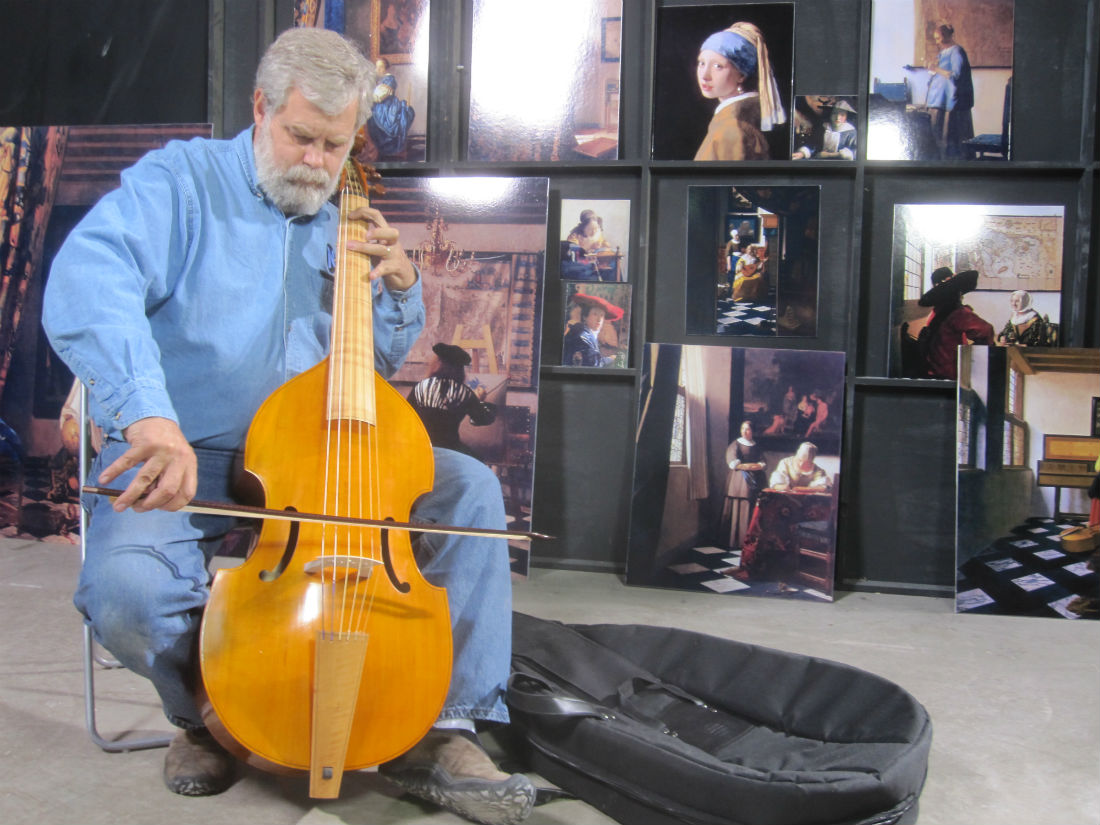The seventh Lone Star Film Festival opened with the year’s most enthralling documentary, Tim’s Vermeer, which held a packed house — and me as well — rapt with attention. The Tim in the title is Tim Jenison, a San Antonio-based video engineer and amateur inventor who first became obsessed with Johannes Vermeer’s paintings 11 years ago, when his daughter gave him a book by the painter David Hockney, who argued that the Dutch master must have used a lens to help him create the photorealistic detail in his paintings. Jenison, who knew about optics from his job, fiddled around with mirrors until he fabricated a simple device (“a mirror on a stick,” in his words) that Vermeer might have made to replicate those elusive lighting effects that you see in his paintings. Here’s some detail on the technique, which involves using a primitive camera lens called a camera obscura. Tim told his buddy Penn Jillette, who saw the potential for a film and brought on his stage partner Teller to direct it.
To prove that Vermeer used this technique (a controversial point among art historians), Jenison resolved to use the device himself to paint a replica of “The Music Lesson,” despite having no training as a painter. As a test, he painted a replica of his father-in-law’s high-school yearbook picture with the device and got eye-poppingly realistic results. The project wound up taking five years, during which Jenison visited Vermeer’s house in Delft, Netherlands and obtained special permission to see the original painting in Buckingham Palace. He rented a warehouse in San Antonio and constructed an exact replica of the room that Vermeer depicts in the painting, grinding lenses and building furniture and mixing pigments to 17th-century Dutch specifications. He also learned how to read Dutch. How are the results? Well, I am not an art historian, but it seems to me that he makes a convincing case for his theory.
Teller gives us sidebars on the neuroscience of human vision and funny anecdotes related by Tim himself about the project, like the time he tried using a outdoor patio heater inside the studio to keep himself warm and almost killed himself with carbon monoxide poisoning. Receiving a viola da gamba for use in his set, Tim (who has some musical background as well) plays the opening notes of “Smoke on the Water” on the Baroque instrument. Penn chips in with some acerbically funny narration, too, but Teller also gives a sense of the scale of the project and the sheer tedium that it requires of Tim to paint his project. I understand why art historians might be freaked out over the idea that Vermeer might have used a camera to help him paint; it seems like cheating. And yet the film gave me a greater appreciation of Vermeer’s genius. After all, the Dutch master discovered this technique for himself and used it to give his art a unique level of detail. Tim Jenison was on hand at the screening and said that his copy of “The Music Lesson” dazzled Desmond Shawe-Taylor, the Surveyor of the Queen’s Pictures who is the curator in charge of the original painting. I’m interested to follow the conversation that this movie is sure to start up in the art community.
After that film, I saw the block of experimental and animated shorts, a group of films high on surrealism. Some of them were mere technical exercises, like Nash Edgerton and Spencer Susser’s The Captain, depicting an airline pilot quizzically walking around the wreckage of the passenger jet that he just crashed, or Moritz Krämer’s Eat, about an emaciated supermodel who goes insane in her dressing room and starts to eat everything in it. I was more impressed by Ashley Michael Briggs’ The Search for Inspiration Gone, a black-and-white silent film reminiscent of Guy Maddin’s work. The same goes for Patrik Eriksson’s Who Is Arvid Pekon?, about a Polish telephone operator who gets a call from a woman wanting to be connected to her dead mother. Who’s going insane, the woman or the operator? I’ll be blogging much more about the Lone Star Film Festival over the next few days, so stay tuned.












